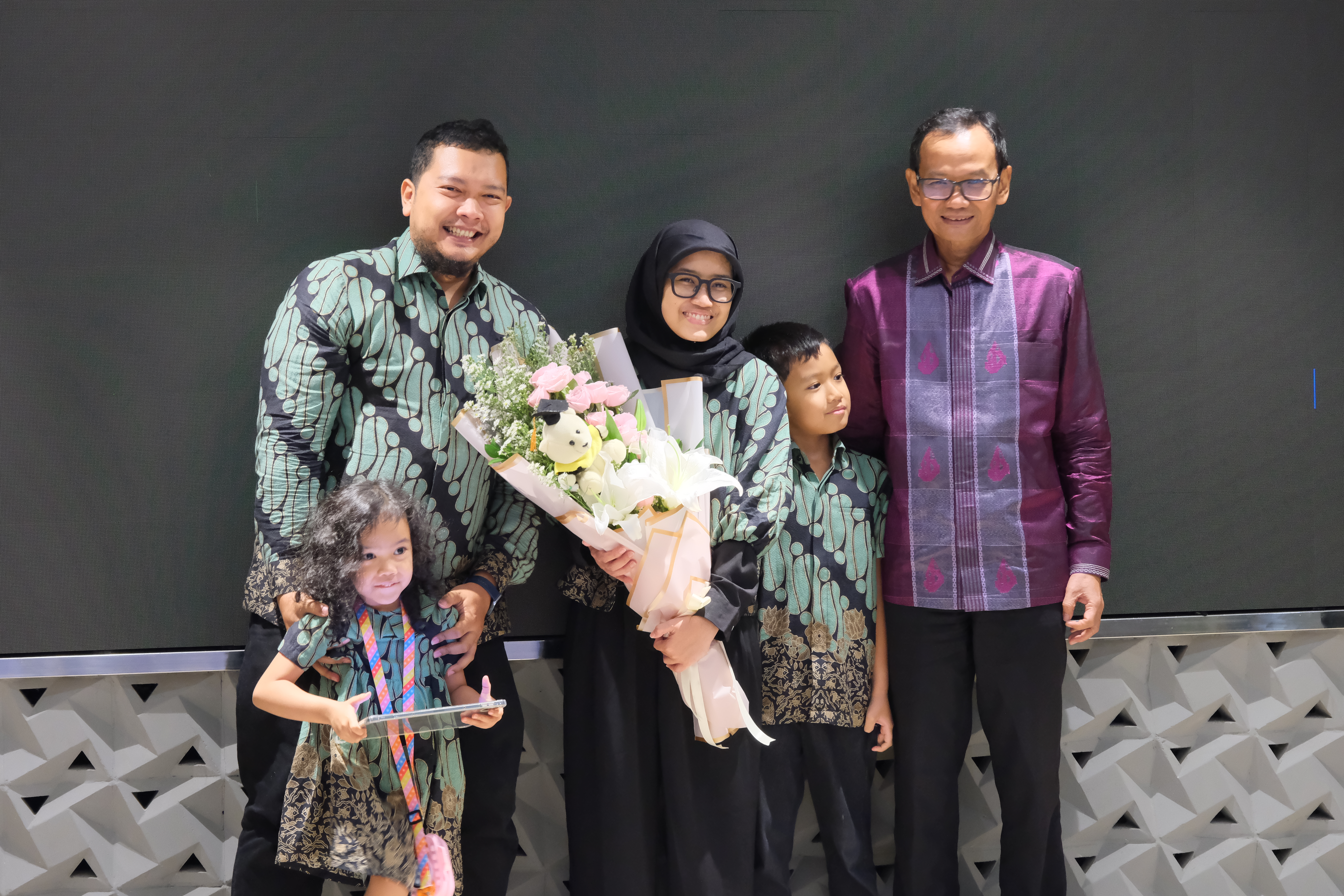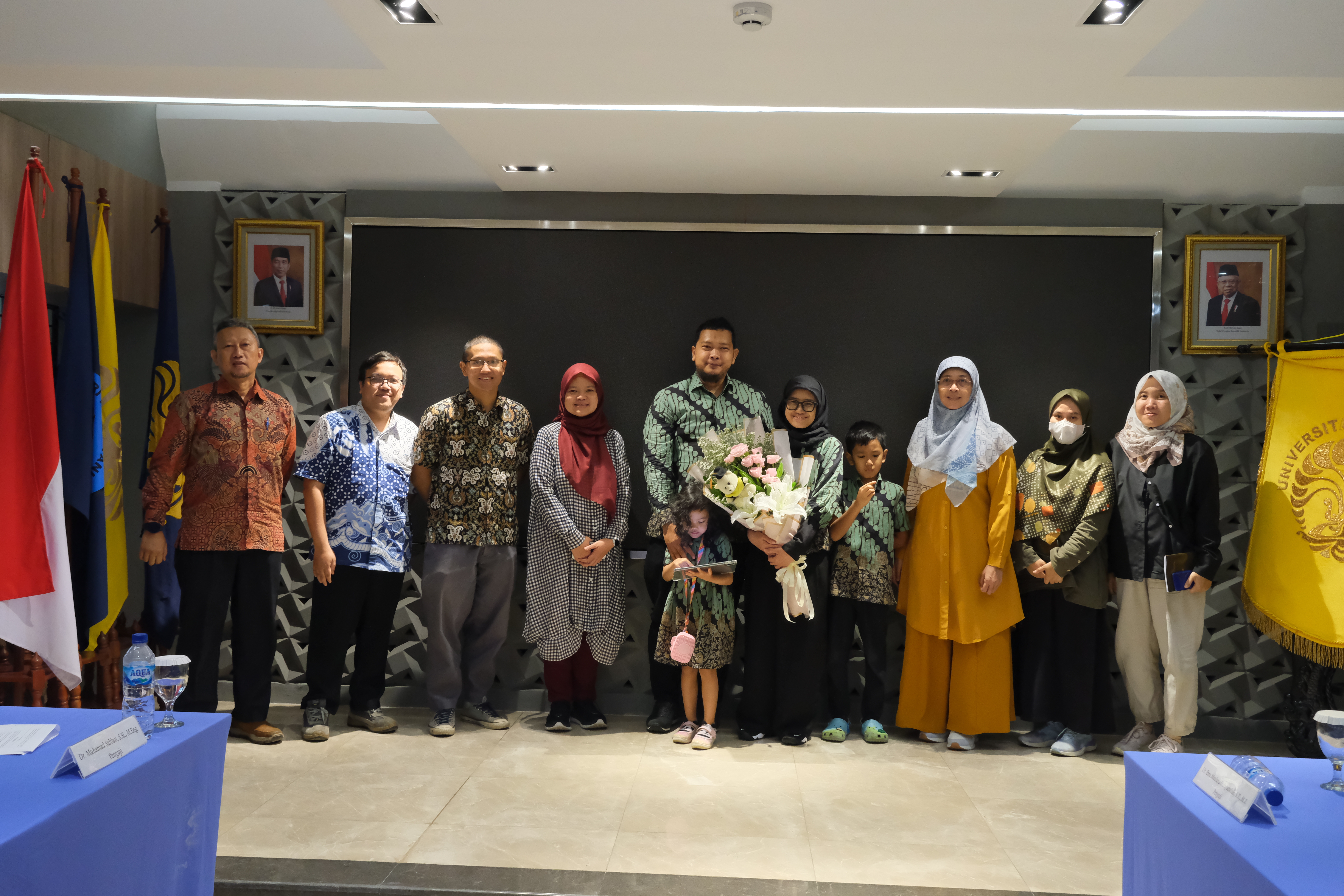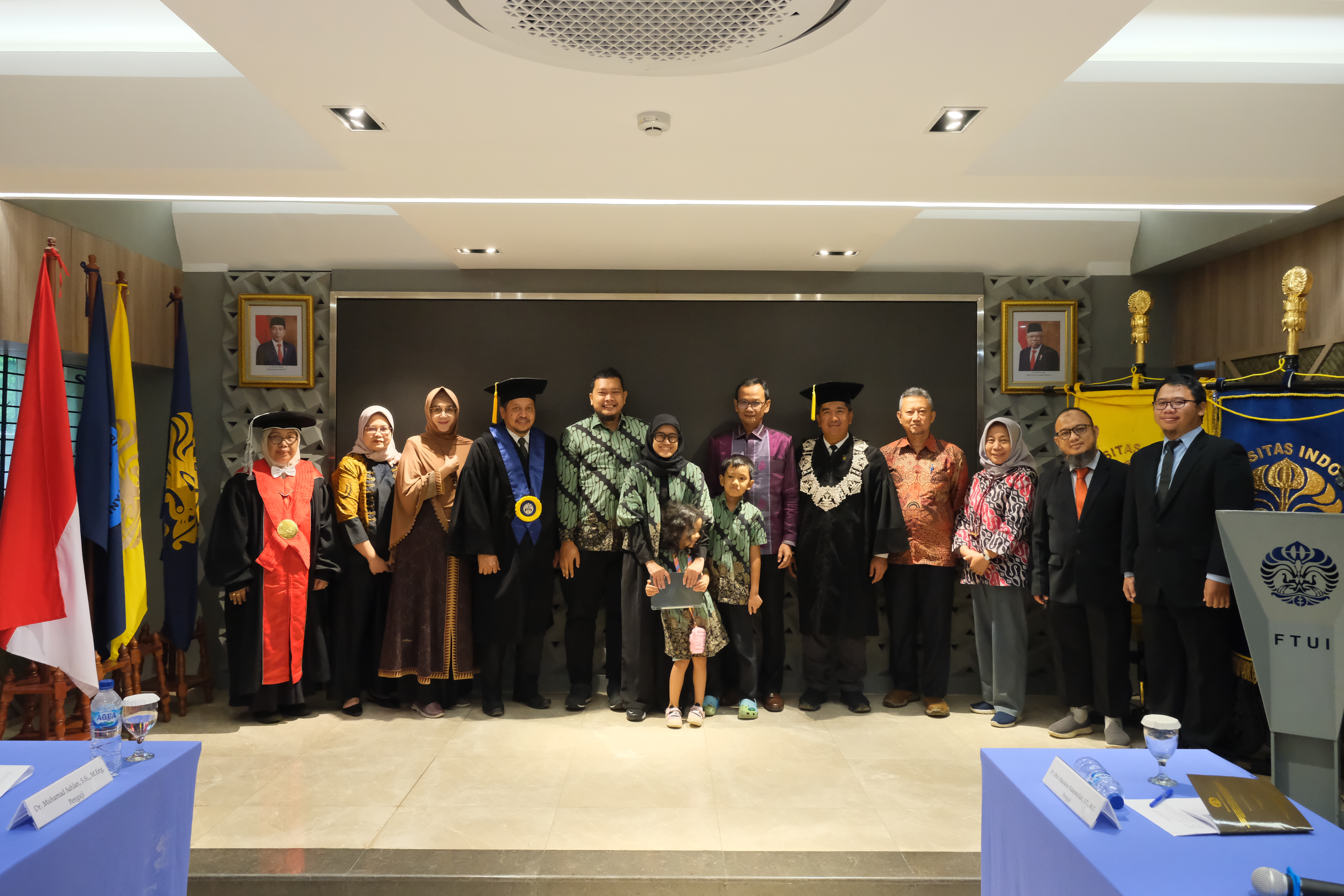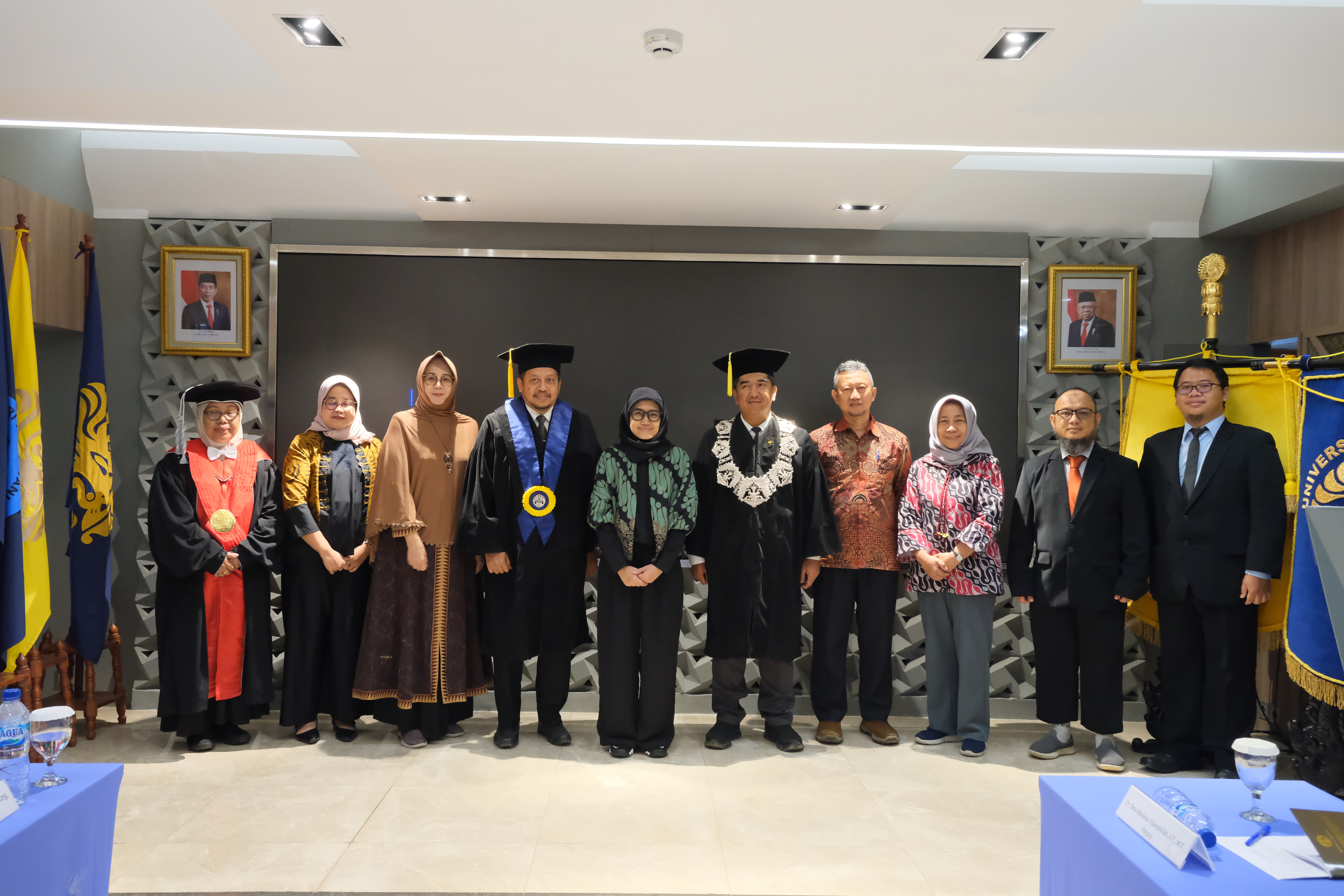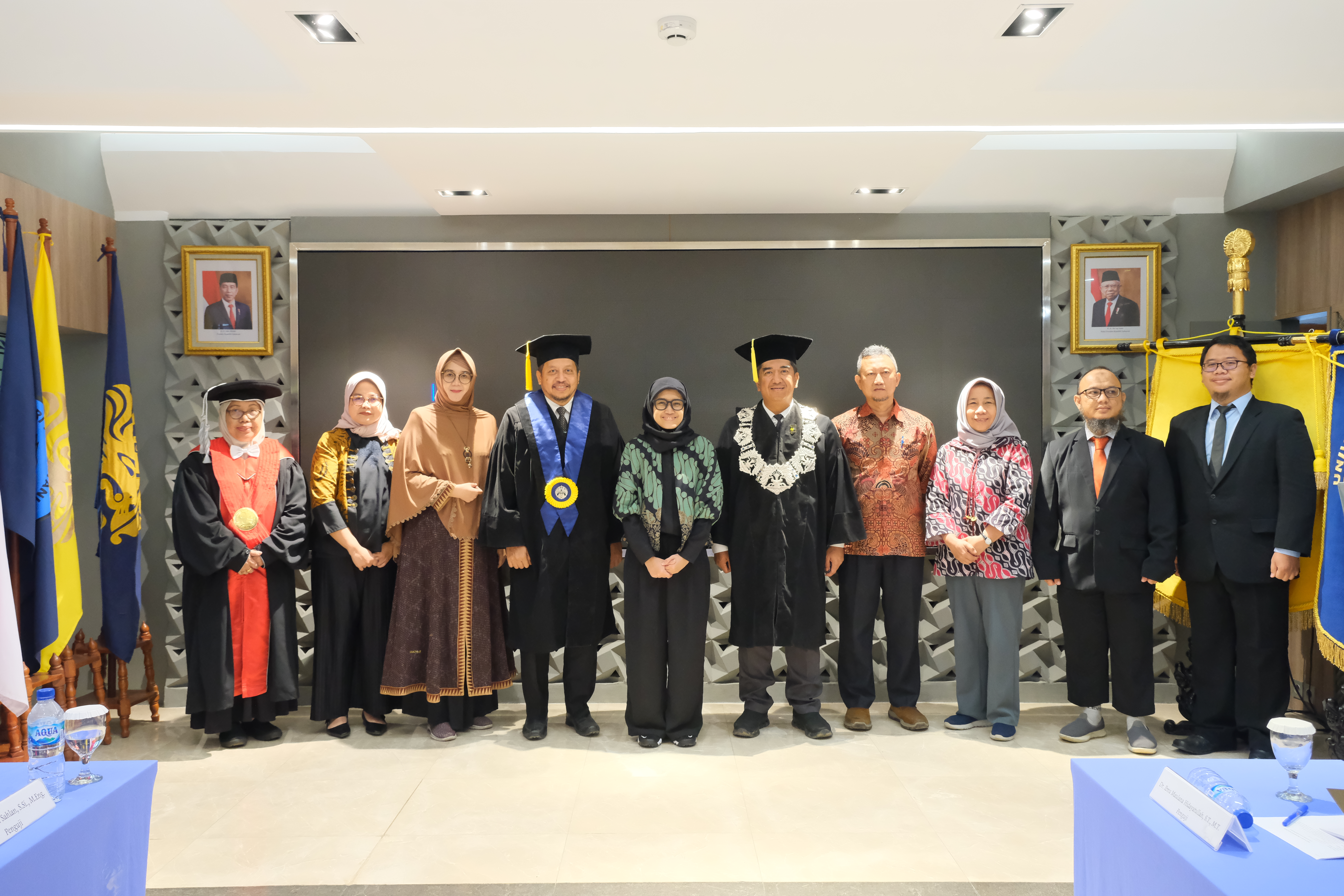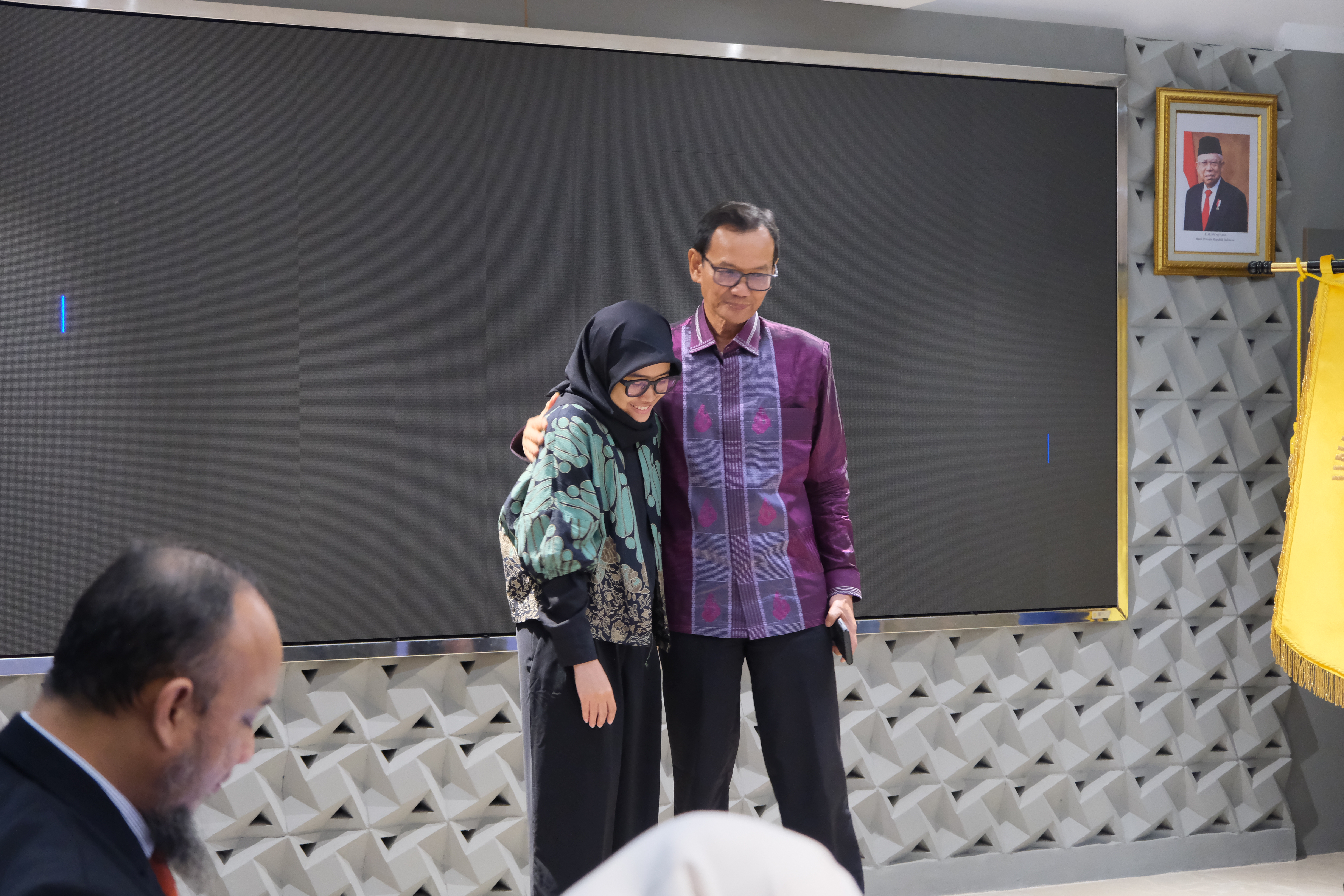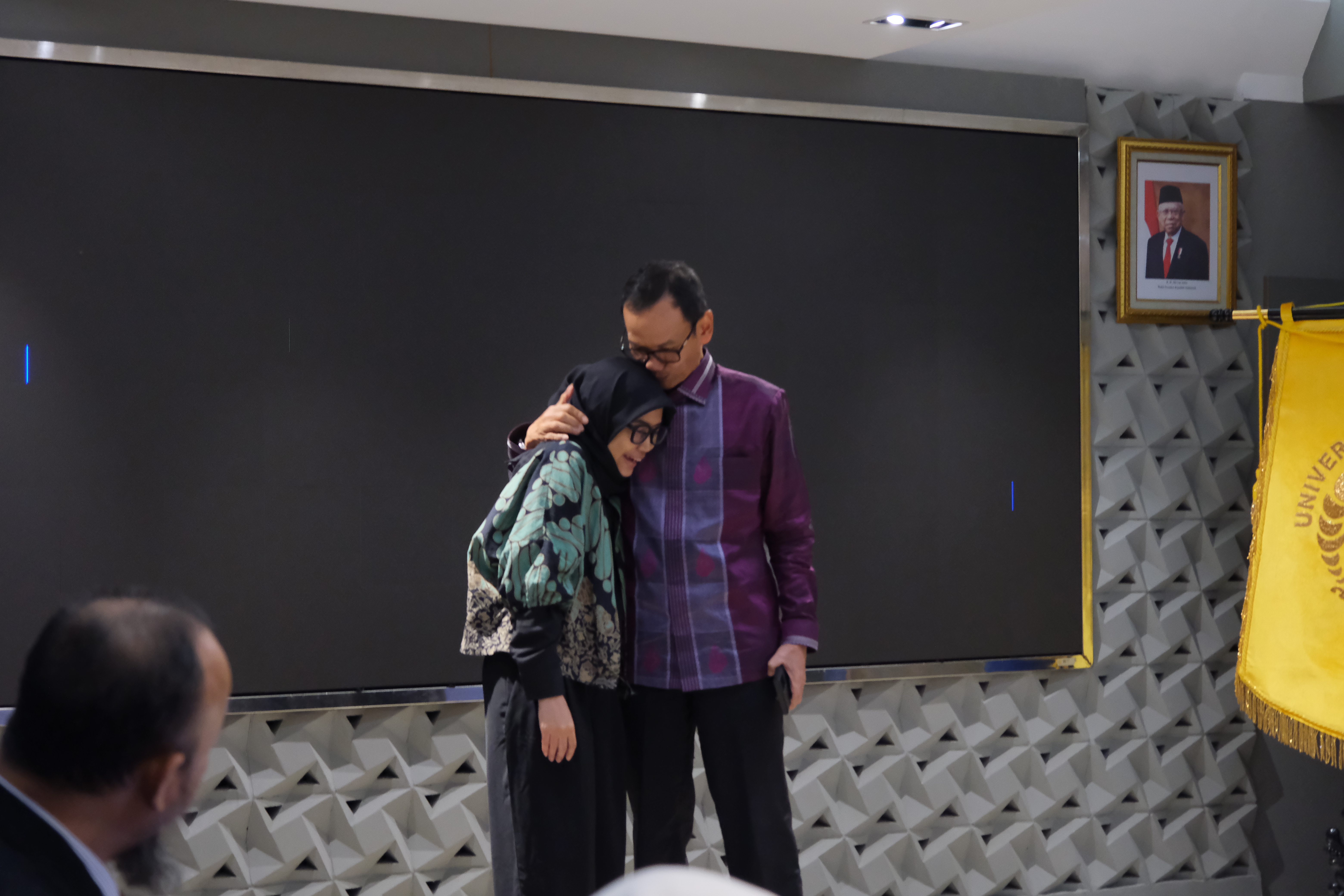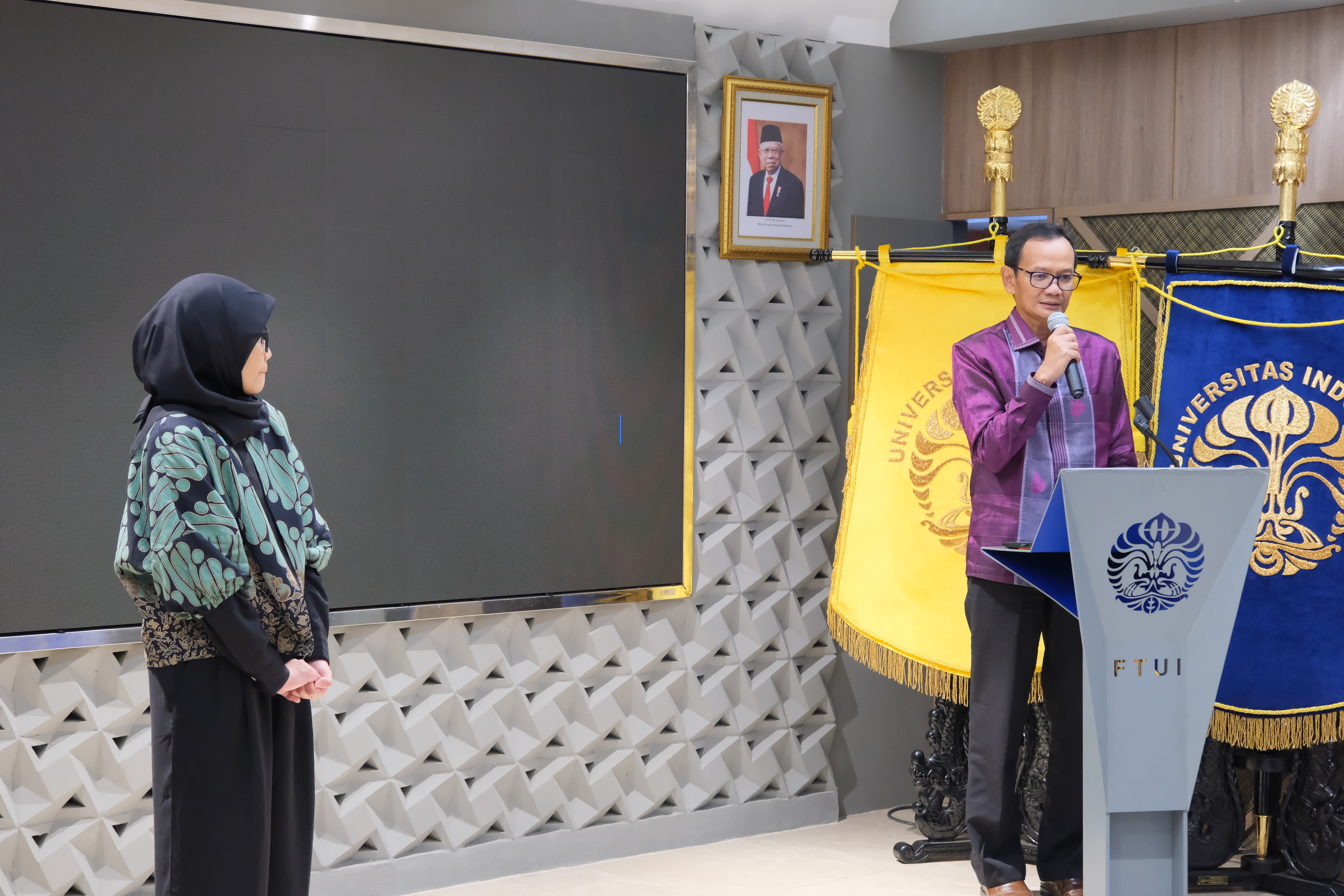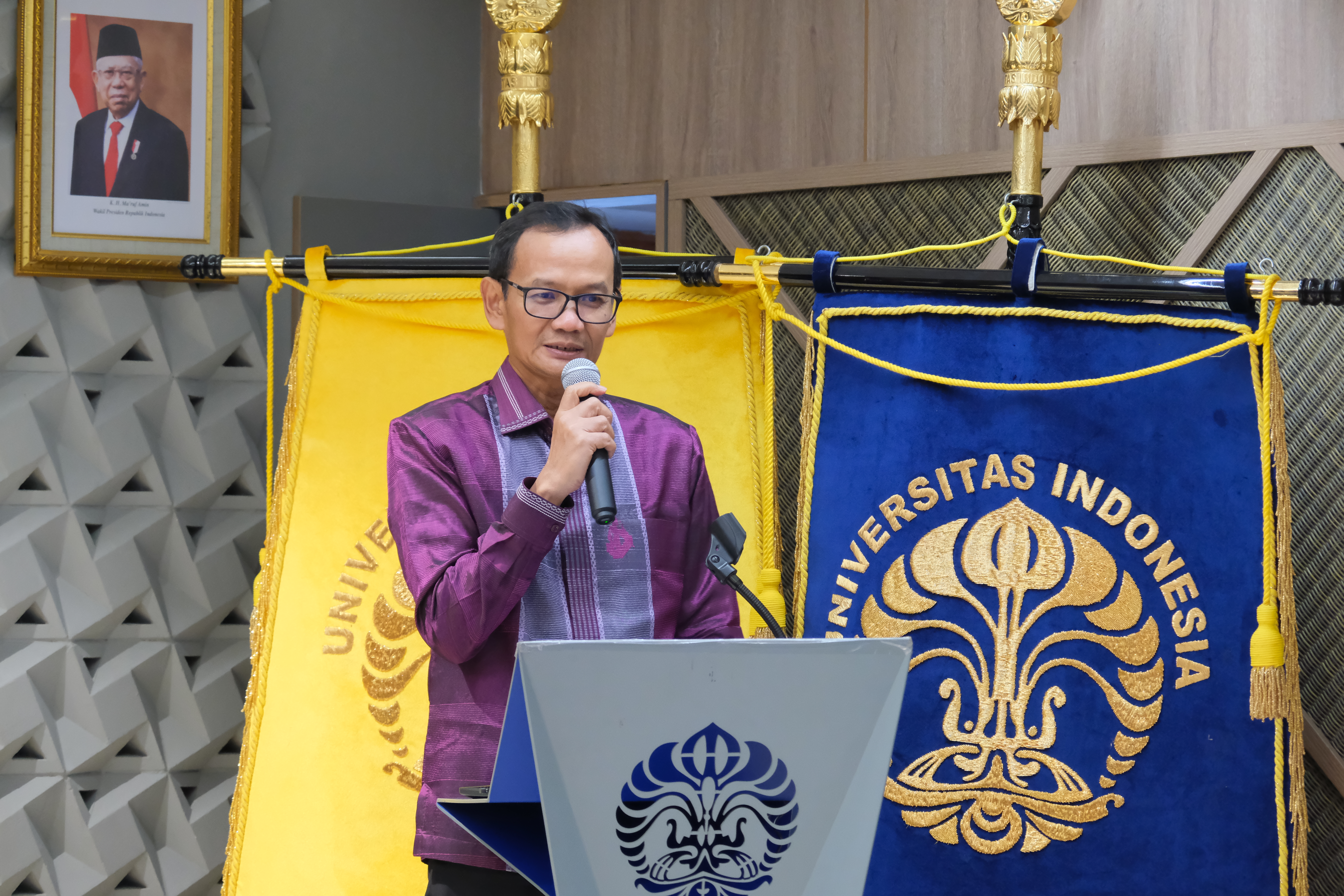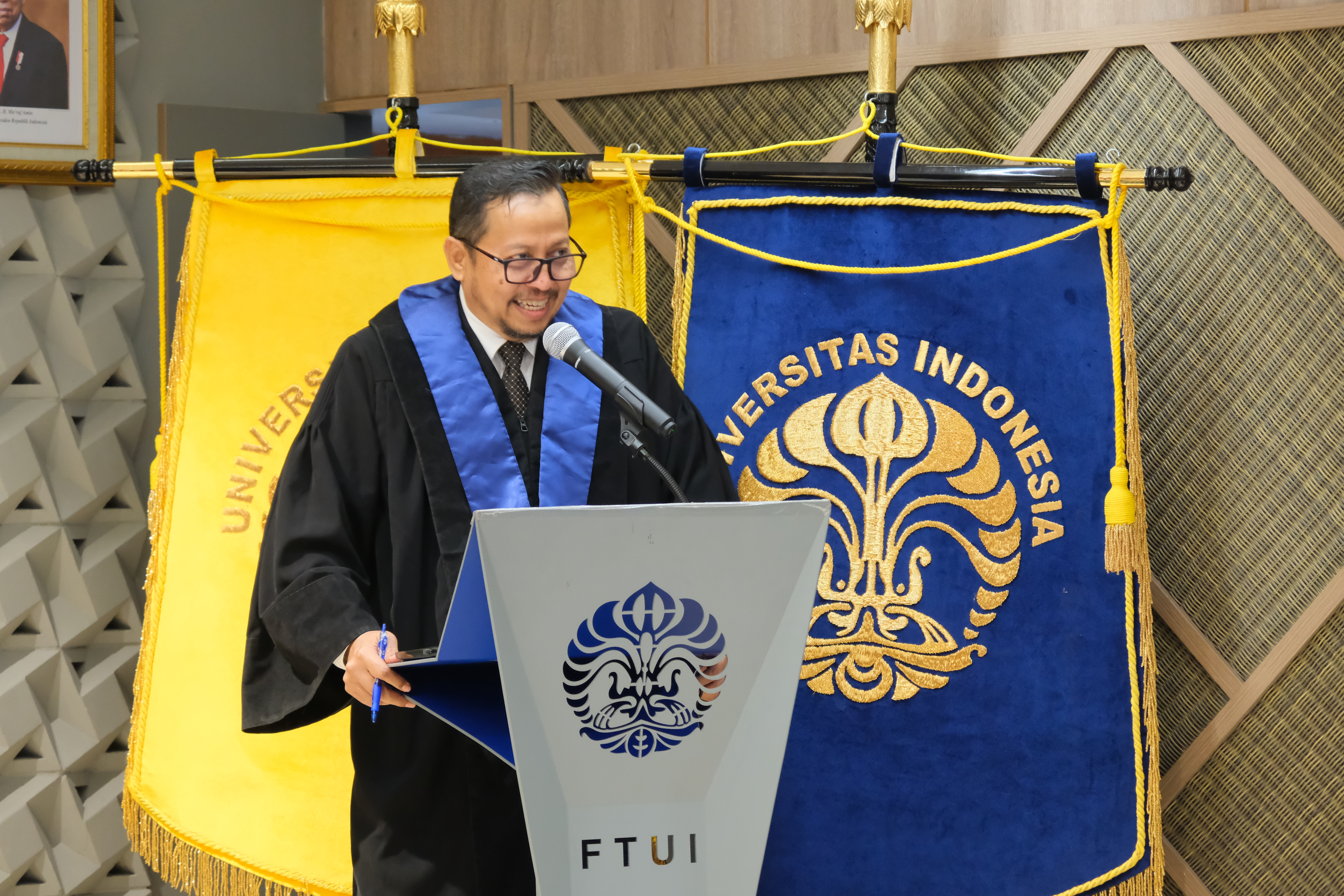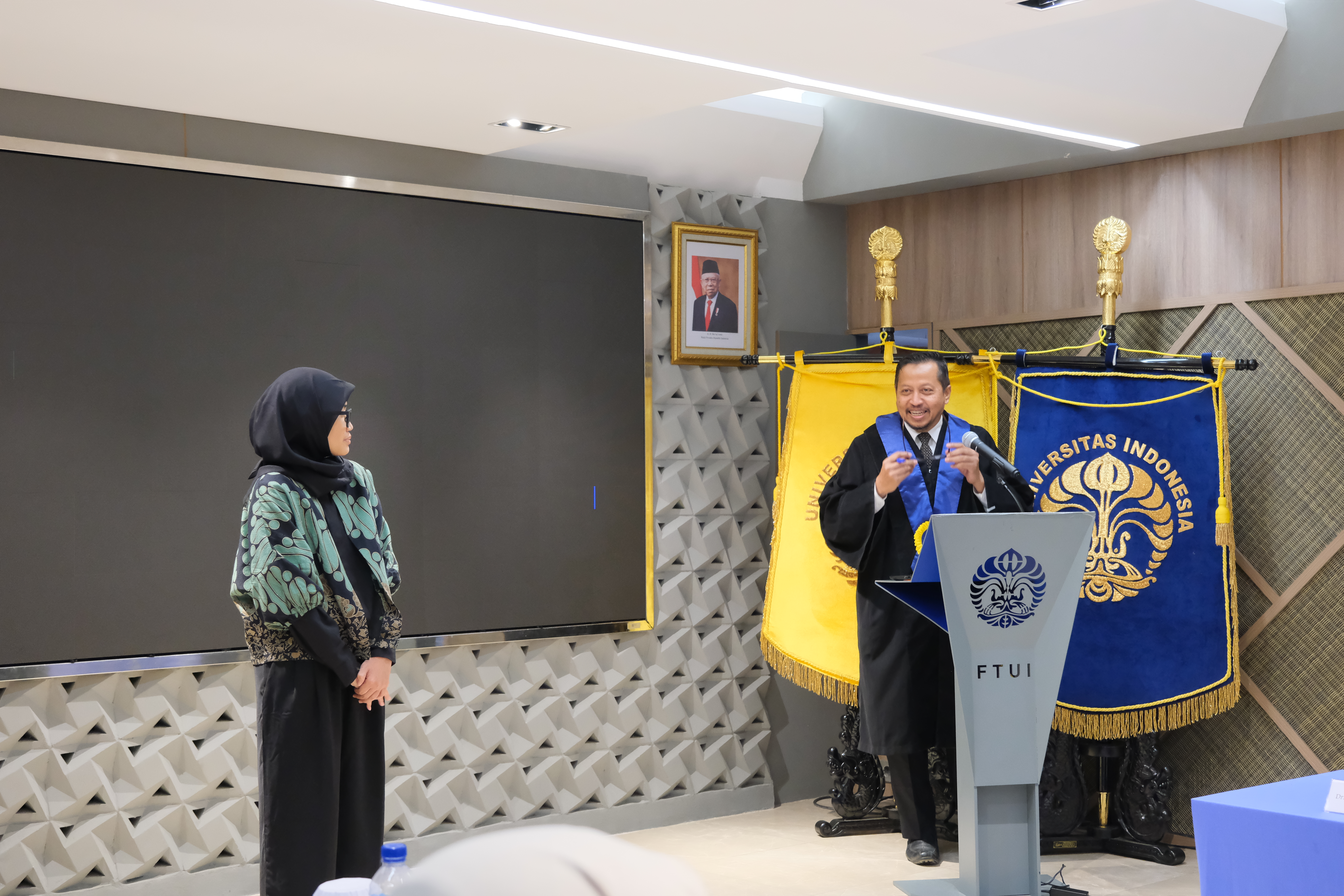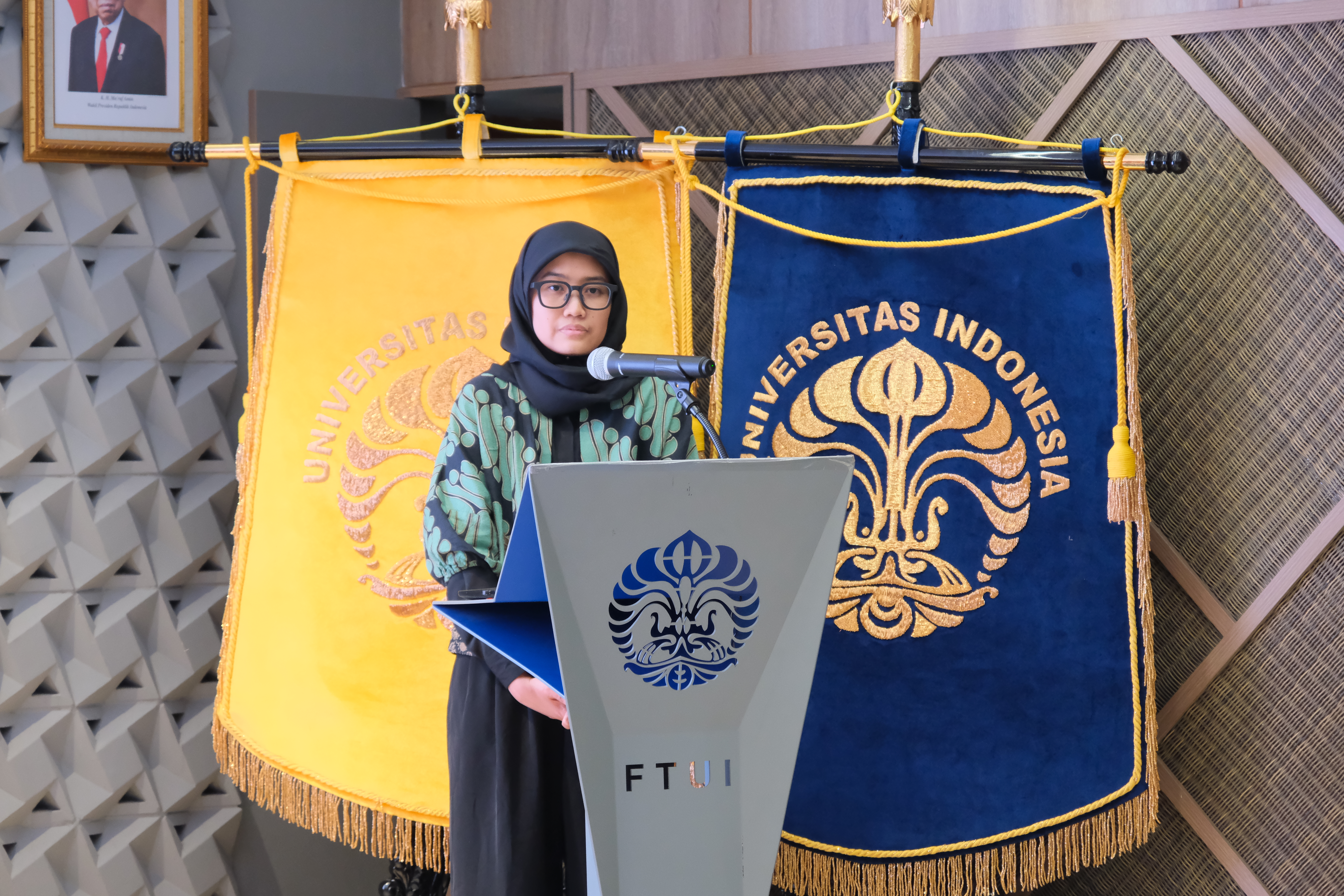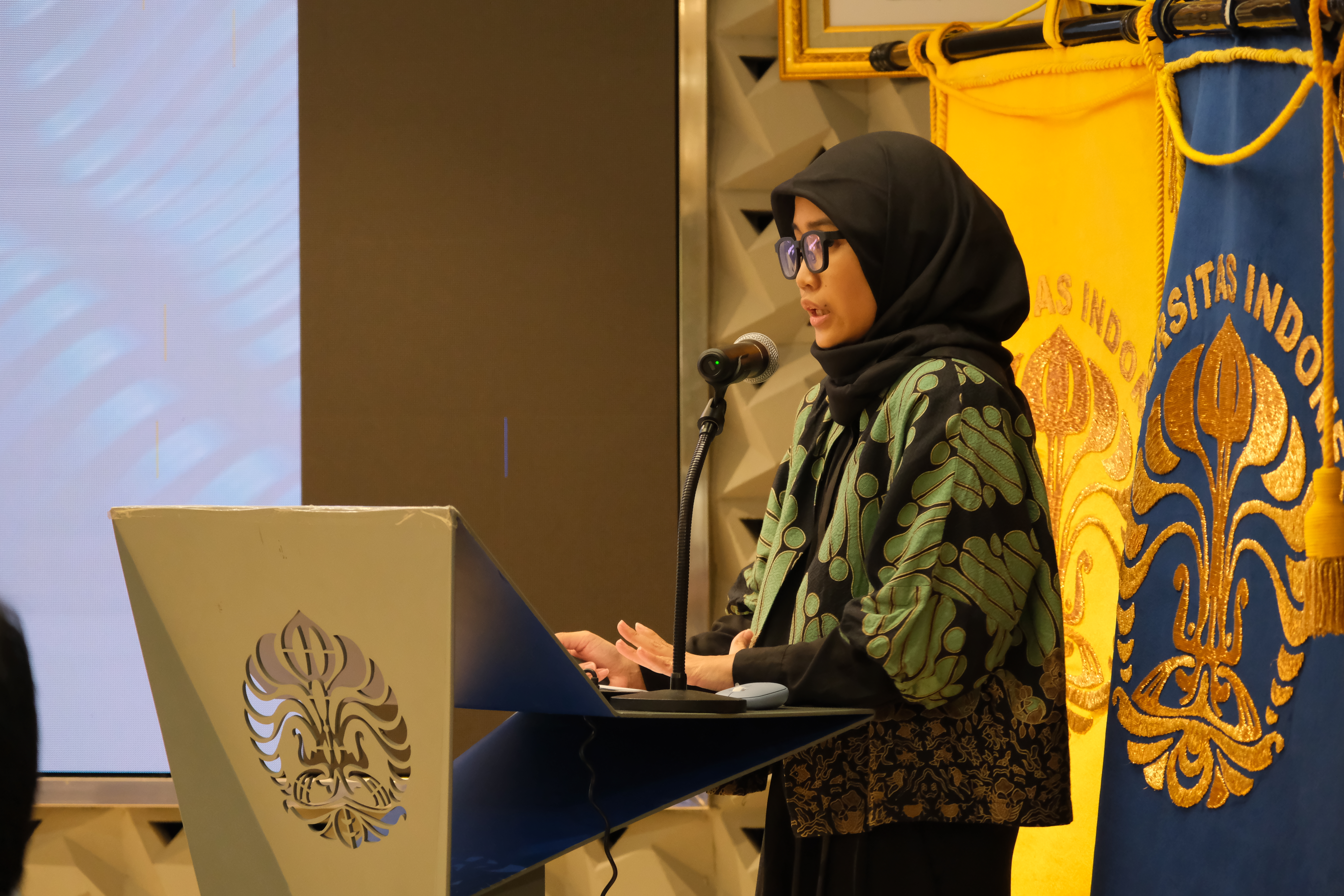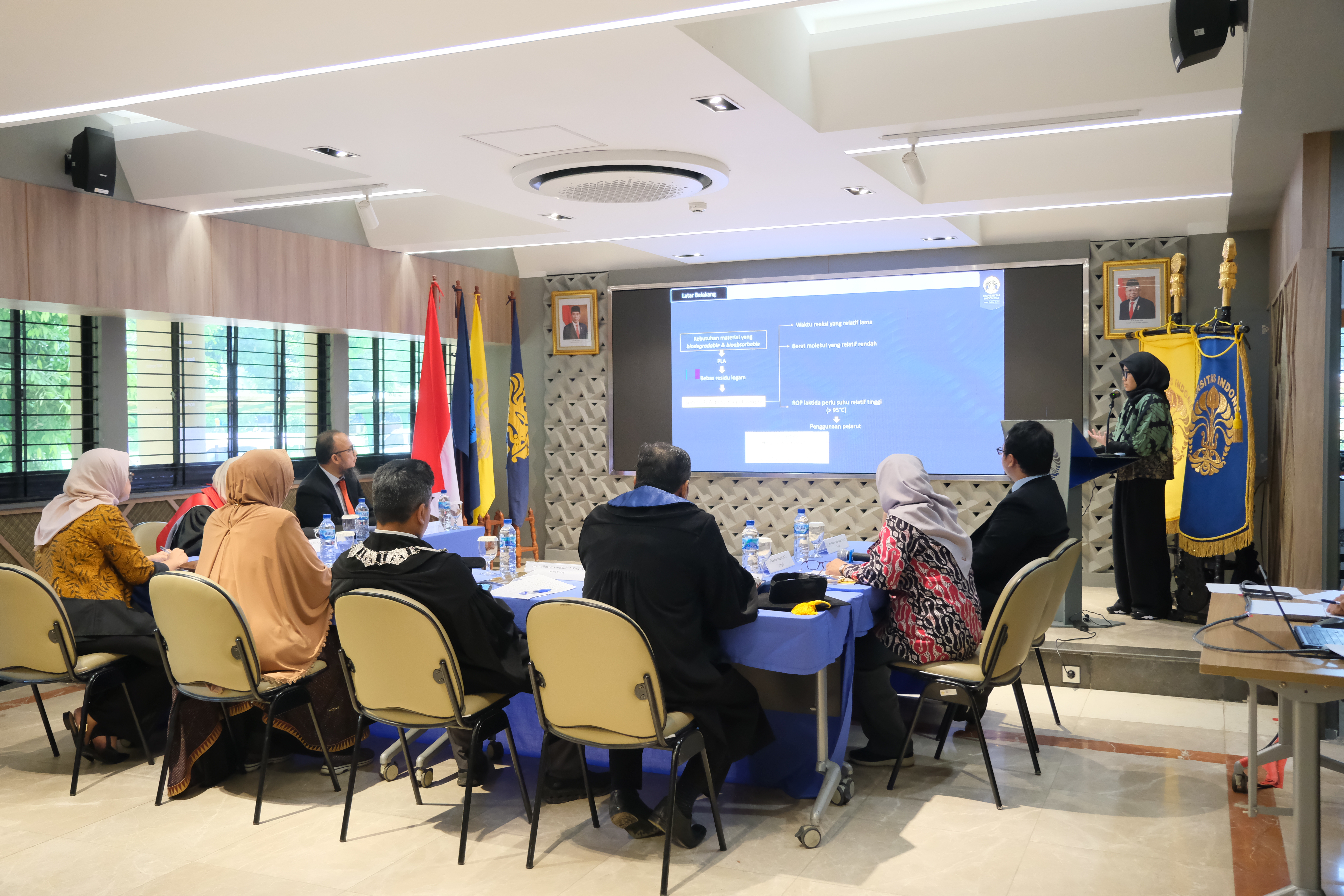In the doctoral promotion session held on January 12, 2024, Catia Angli Curie, a doctoral student in the Chemical Engineering Department at the Faculty of Engineering, University of Indonesia (FTUI), successfully presented the results of her research on the optimization of polymerization to increase the molecular weight of Polylactic Acid (PLA). PLA is a polymer commonly used in the pharmaceutical industry, particularly for biomedical applications.
In the industry, PLA is generally synthesized using metal-based catalysts/initiators. However, this raises concerns about the toxicity of metal residues in PLA. To address this, Catia researched PLA synthesis using enzyme catalysts. However, this method has its challenges, one of which is the low molecular weight of PLA that can be achieved.
This research aims to evaluate the effects of solvents and enzyme treatments on the ring-opening polymerization (ROP) of L-lactide catalyzed by Candida Rugasa Lipase (CRL) to achieve a sufficiently large molecular weight of PLA (average molecular weight, Mw ≥ 104 g/mol).
In the first stage, ROP was performed with variations in the concentration of CRL enzyme (0%, 2%, and 5% by mass) and variations in solvents (types of solvents and monomer-solvent ratio). The solvents studied were N, N-dimethylacetamide (DMA), ionic liquid [BMIM][PF6], 1,2-dimethoxybenzene, 1,4-dimethoxybenzene, diphenyl ether, and n-dodecane. This research also considered the influence of CRL enzyme treatment to improve enzyme stability and activity.
“The studied lipase treatments include immobilization and pre-treatment using organic solvents. The organic solvent used for the pre-treatment of CRL is different from the solvent in the previous ROP of the L-lactide stage. Immobilization is done with variations of physical adsorption methods using or not using organic solvents, and support materials using celite and silica gel chromatography grade,” said Catia, describing her research process.
Pre-treatment using organic solvents was carried out with several variations of solvent types, namely acetone, isopropanol, cyclohexane, and isooctane. In addition, the contact method was also performed with and without stirring, and with and without drying. Then, variations in contact time were carried out in the range of 5 minutes to 24 hours. Enzyme activity after treatment was tested by using it to catalyze the esterification of butyric acid and butanol, where the esterification products were analyzed using titration and Gas Chromatography-Mass Spectrometry (GC-MS).
“The optimum immobilization and/or pre-treatment methods are applied to CRL for use as a catalyst in ROP of L-lactide. ROP optimization is carried out by varying the reaction temperature ranging from 110-130°C by comparing untreated CRL with CRL treated optimally from the previous stage,” explained Catia.
The obtained PLA was then characterized using Proton Nuclear Magnetic Resonance (1H-NMR) spectroscopy to ensure the formation of PLA structure by estimating its monomer conversion, and Gel Permeation Chromatography (GPC) to determine the formed PLA molecular weight. From this research, Catia then examined the influence of solvent hydrophilicity, the effect of [BMIM][PF6] solvent, and the effect of CRL treatment on the ROP of L-lactide. The optimization carried out successfully produced PLA with the highest Mw reaching 2.8×10 g/mol and an average molecular weight (Mn) of 1.4 ×104 g/mol.
“As far as I know, that molecular weight is the highest molecular weight ever achieved for PLA synthesized using Candida rugosa lipase catalyst. This PLA has the potential to be applied as a drug encapsulation material in controlled-release drug delivery systems. This PLA is obtained through ROP of L-lactide at a temperature of 130°C with CRL catalyst pre-treated using n-dodecane,” said Catia in the conclusion of her research.
Responding to the research presented by Catia Angli Curie, FTUI Dean, Prof. Dr. Ir. Heri Hermansyah, ST., M.Eng., IPU, stated, “The research conducted by Dr. Catia is a potential step in strengthening technology in the pharmaceutical industry through the optimization of PLA polymerization. Perhaps one day Dr. Catia can achieve a Nobel Prize like her name inspired by Marie Curie.”
Present at the defence was Prof. Ir. Nizam, M.Sc., DIC., Ph.D., acting as the Acting Director General of Higher Education, Research, and Technology. Thanks to her research, Catia was successfully designated as a doctoral graduate with a GPA of 3.98 and the Cumlaude predicate. Catia is the 69th doctoral graduate from the Department of Chemical Engineering and the 537th from FTUI.
The doctoral promotion session was chaired by the Session Chair, Prof. Dr. Ir. Heri Hermansyah, ST., M.Eng., IPU.; with the Main Supervisor, Prof. Dr.-Ing. Ir. Misri Gozan, M.Tech., IPU; Co-Supervisor I, Ir. Dr. Dianursanti, S.T., M.T; and Co-Supervisor II, Wiratni Budhijanto, S.T., M.T., Ph.D. The Examination Committee consisted of Prof. Dr. Yanni Sudiyani, M.Agr., Elsa Anisa Krisanti, S.Si., Ph.D., Dr. Muhamad Sahlan, S.Si., M.Eng., and Dr. Ibnu Maulana Hidayatullah, S.T., Μ.Τ.
***
Public Communication Office
Faculty of Engineering, University of Indonesia

